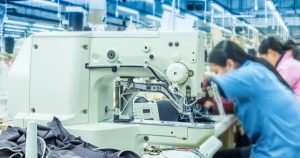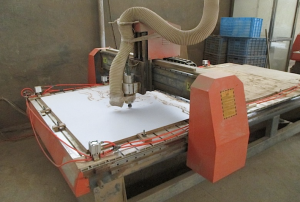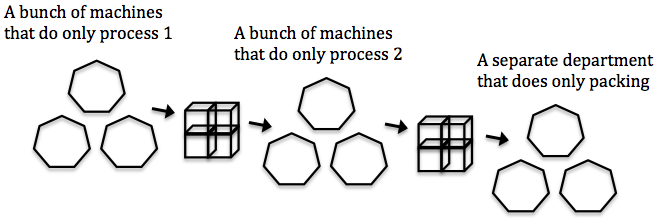Planning the start of production so that a first article inspection can be performed before the rest of mass production takes place... That’s not something the average Chinese factory does, unfortunately.
However, under the right circumstances, a first article inspection (FAI) can save an entire production from disaster.
Here’s how…
What is a first article inspection?
American national standard ASQ/ANSI ID1:2021 defines a First Article Inspection as follows:
Extremely critical; if first article inspection is incorrectly approved, production and potentially the customer will obviously be adversely affected. First article is validation that the manufacturing process is capable of producing parts that meet specifications. It also provides evidence for verification of set-up! Parts are often retained and may even be required to be submitted to the customer.
When discussing the ‘first article’ I am not referring to the pre-production samples, but to the inspection of one of the very first pieces out of ‘real’ mass production.
By real mass production, I mean this piece has to be made in the same material and/or components, on the same equipment, by same people, etc. as mass production.
For instance, a company has an approved pre-production sample that is perfect and they go ahead with mass production based on that, only to find that during the process something has gone wrong and all pieces are defective. It does happen, including in the very best factories. The FAI is a safety net that detects those situations and prevents production to keep running…until the issue has been fixed, and another FAI confirms all is good.
What happens during an FAI?
Details will vary from one factory to the next, but the general steps are as follows:
- The requirements for a passed FAI are clear – for example, there is a checklist, an approved sample, and some testing equipment ready.
- There is a changeover or a production start.
- An operator, or a quality technician, sets the first piece(s) apart and checks it/them against requirements. This job typically goes into much more depth than other in-process quality checks.
- If all is good, production is allowed to keep running.
- If some issues are found, production must be halted until the point of cause is identified, a root cause is addressed, and another FAI shows the results are effective.
What issues does an FAI typically catch?
The following types of issues are most commonly detected:
- Wrong material/component
- Poorly positioned/loaded material/component
- Inconsistent quality of material/component
- Wrong processing equipment used
- Poorly set processing equipment
- Inability to confirm if a part is acceptable or not
For what types of productions is an FAI most needed?
It makes more sense when the products come out of the process one by one, or in small batches at a time, rather than in 1 large batch after long processing (e.g. making microprocessors or pharmaceutical pills — in those cases, there is far more emphasis on process controls and also the use of statistics).
Another important element is the degree of ‘reproducibility’ built into the process. If you make 2 types of cables, the process is numerically controlled, and you switch from one to the other several times a day, after some time you might decide not to do an FAI.
Finally, if a continuous sampling plan is in place, and if issues typically caught in an FAI would also be caught in a routine verification, there is no need for an FAI (it would be double work).
Why do many manufacturers skip this step?
There are mainly 3 reasons:
- To save a bit of time.
- Because they tend to be over-optimistic. They don’t anticipate potential issues. If they reflected on their past quality issues (and the amount of money they lost that way), they would probably conclude that it is worth the little extra time investment.
- Because their production operators are paid by the piece and want to work continuously in the same way on the same batch. They don’t want to do their setup, make 1 piece, and then wait a bit (or switch back to another job).
A few examples
First article inspection on wood furniture
When wood furniture is made, a relatively frequent issue is difficulties in assembling the full product. There might be a variety of reasons for that, among which:
 Wrong cutting program loaded in the automated cutting machine
Wrong cutting program loaded in the automated cutting machine- Manual cutting is done the wrong way because the piece is not positioned correctly into the jig
- The drilling fixture is loose and the part being drilled is not always in the right position
- Wood chips accumulate in the drilling fixture, making the location of the drilling hole shift over time
- The drilled hole is chipped on the edge
- The drilling bit used is wrong (too small or too big)
In short, things can go wrong in many ways!
Imagine cutting and drilling all the MDF to make 1,000 cabinets, only to discover at the last moment that you need to rework some parts and re-produce some others. That’s a very heavy loss — not to mention, a delay in shipment.
What do good manufacturers do? Of course, they put processes in place to address all these potential failure modes. But that’s not enough. Once in a while, something will go wrong. So, they cut & drill the parts to make 1 finished product, and they assemble it right away. If that’s OK, the upstream processes (cutting, drilling, etc.) can keep going.
I could go on and on with examples. Here are 3 others:
First article inspection on plastic injection molding
In plastic injection molding, validating a first good piece is an integral part of signing off on a new mold.
The process is usually as follows: 
- The requirements for acceptance are clear – for example, there is a checklist and an approved sample.
- The new mold is set in place in an injection press, which is thoroughly flushed of old material and is loaded with the exact type of polymer that will be used in mass production
- A few pieces are molded and unloaded
- Those few pieces are carefully inspected (visually, dimensionally…) based on the set of requirements (see step 1)
- If deviations are observed and are not acceptable, another round of tooling modification and trial is needed.
In the automotive industry, where demand might extend to millions of pieces and where there is very little tolerance for quality issues, it is quite common to go through “T0” (meaning “trial zero”), T1, T2, and sometimes T3, until the injected parts are accepted.
Each round typically takes 1-2 weeks. Changing an injection mold takes time.
First article inspection on garment production
In garment production, buyers often require “the first samples coming off the production lines”, to confirm that all is good. Many issues are found at that point, from the wrong placement of labels to a mixup of colors.
The first finished products coming from the “top of production” are commonly called “top samples”. And they are often sent by express courier to the buyer for confirmation.
I have seen countless instances where the buyer asks them to stop production, fix issues, and re-submit top samples. A first article inspection at that stage is really, really important. There are several reasons for that:
- In apparel, there is very little pre-production preparation. It is a relatively backward approach, with a “we’ll fix it if it is wrong” mentality.
- There is, in most cases, an approved pre-production sample. It is usually in the exact fabric & accessories, since it is used to confirm sizing. However, it is not always in the exact colors. That leaves a lot of room for mistakes.
- Misunderstandings are very common due to poor communication, different languages, the distance, etc.
Oh, and I should mention that, in many cases, the buyer’s verification of the “top samples” is actually NOT an FAI. Many manufacturers in China, Vietnam, and other Asian countries prepare them in a sample room, rather than in the cutting & sewing workshops.
First article inspection on PCB assembly
In this video, we outline the most common tests to confirm the PCB assembly process has been performed as required.
One of them is the first off inspection. 
The technician would not only run functional testing but also do a visual check on a microscope in order to pick up any issue indicative of a process issue.
When does performing a first article validation not make sense?
If a long time passes until the first completed item rolls off the lines, and if long setup times are necessary at several steps, it might be impractical.
Basically, this type of organization (in disconnected islands) won’t make it easy:
And this type of line setup will make it very easy.
Is it always appropriate?
If a manufacturer is about to start making a new product, and if expected volumes are high, it makes more sense to do a full-blown pilot run. And another one, and another one, until it is demonstrated that this new product can be made at the desired pace and quality level.
Conversely, if the production batch is very small, and if the manufacturer is quite used to making that specific product, there might be no need to spend more than a few minutes on inspecting and validating the first article.
Taking the next step
If you feel that you would benefit from first article inspections you have three choices:
1 – Have your supplier do this in their factory
- Pros: no extra cost for your company; buy-in from within their organization
- Cons: reporting is probably non-existent or poor, and can be ‘fabricated’
2 – Perform them yourself at your supplier’s facility
- Pros: direct confirmation that it is really done; you learn about your supplier’s process
- Cons: consumes scarce resources
3 – Work with a quality assurance company like ours to perform them for you
- Pros: confirmation that it is really done, with clear reporting; easy to book and dispatch a technician
- Cons: not free
If you’re interested in getting our help with your first article inspection, follow this link to learn more.
*****
Have you performed FAI and had success? How so? Please share your experiences and questions as a comment.
Sofeast: Quality Assurance In China Or Vietnam For Beginners [eBook]
This free eBook shows importers who are new to outsourcing production to China or Vietnam the five key foundations of a proven Quality Assurance strategy, and also shows you some common traps that importers fall into and how to avoid or overcome them in order to get the best possible production results.
Ready to get your copy? Hit the button below:






Very professional article about the first article validation.
Some small factories really did not put more effort and time on that.
So, find a good supplier becomes very important work.
Dude! What i do is Quality Assurance and inspection on a daily basis. I save so much money for my clients, because the broken tubes never gets out of the factory again. Tubular inspection is the number one key for us. But as your article states it’s the same for all the different areas, like wood or plastic injection.
Thanks for your article, was a great read 🙂